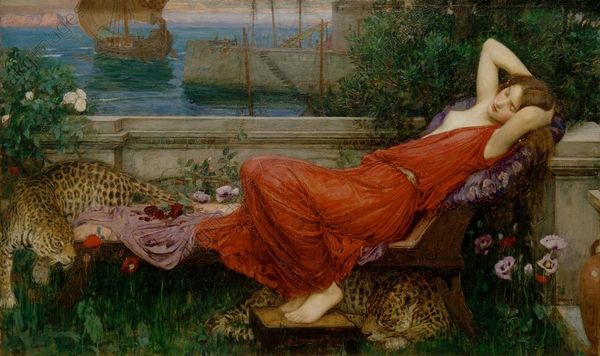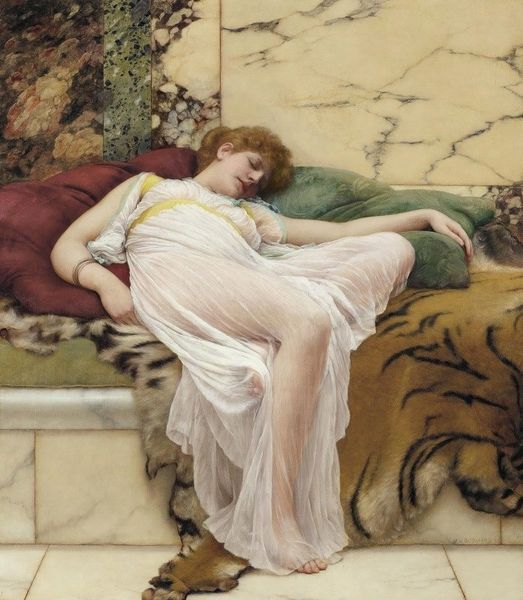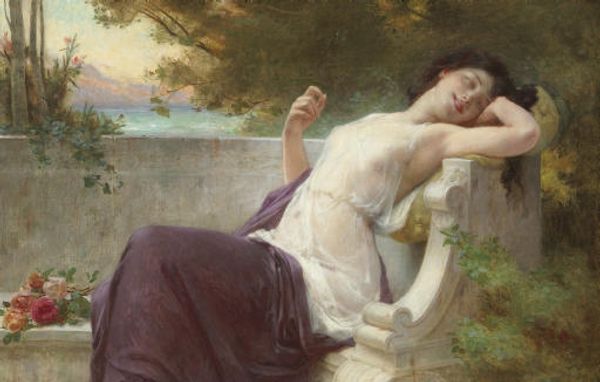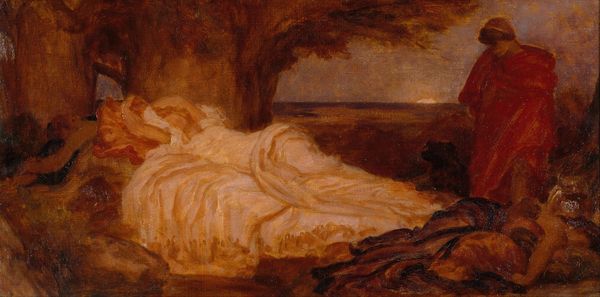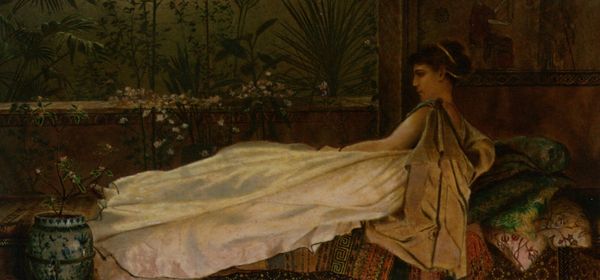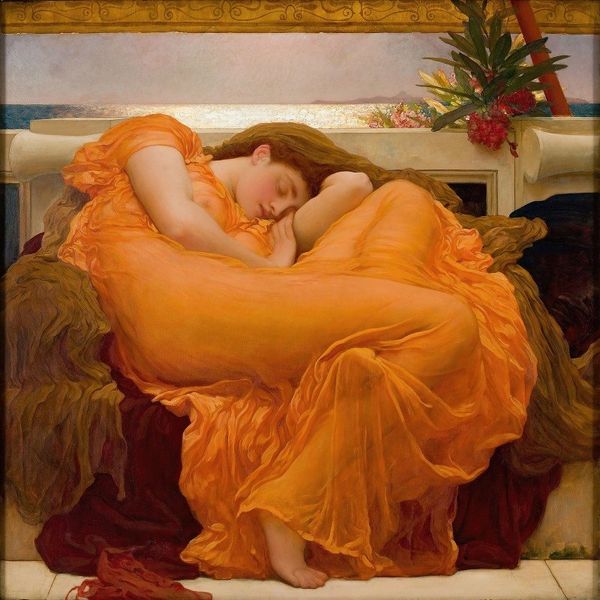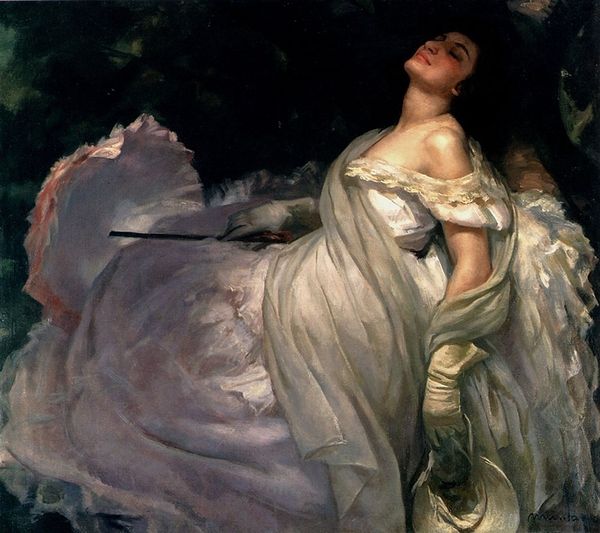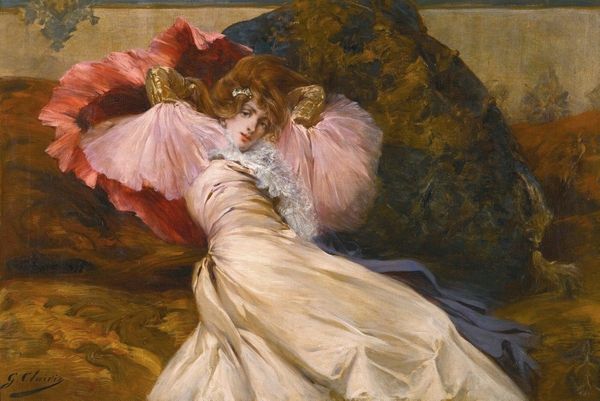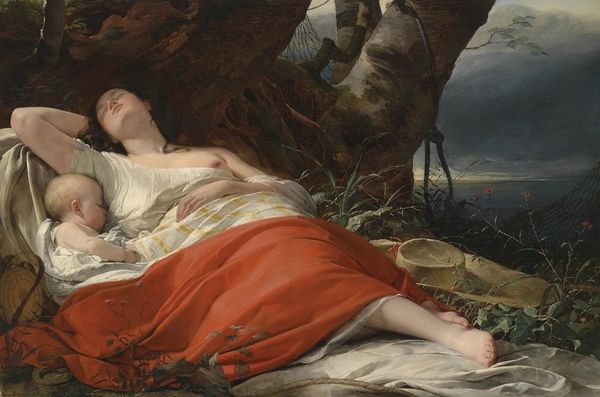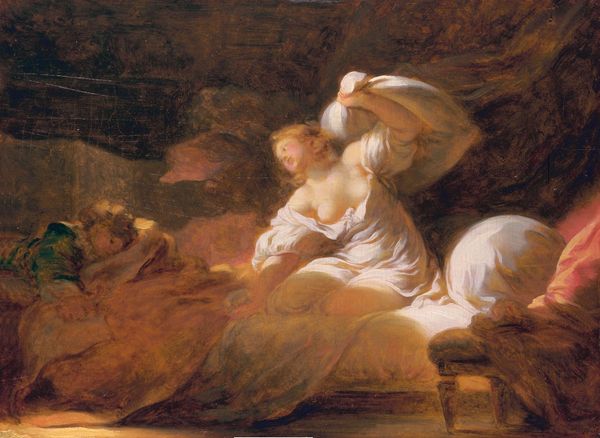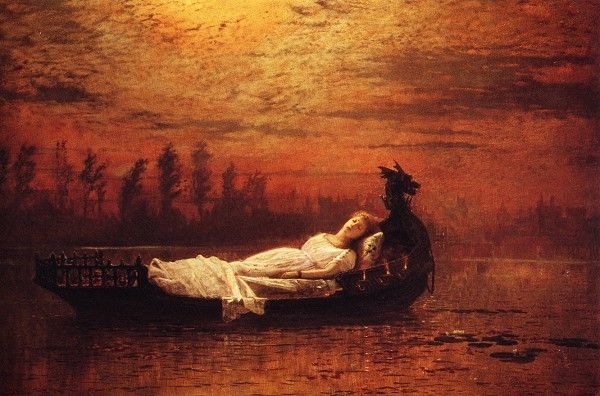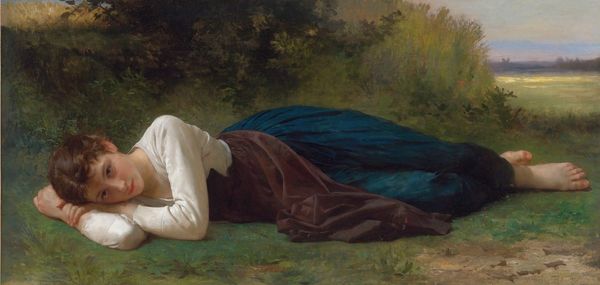
Copyright: Public Domain: Artvee
Frederic Leighton painted Cymon and Iphigenia in the late 19th century, a period when British artists frequently drew inspiration from classical mythology. Here, Leighton adapts a story from Boccaccio's Decameron, reflecting the Victorian era's fascination with themes of awakening and transformation. Note how Cymon, initially depicted as a rough, uncultured man, is shown here transfixed by the sleeping Iphigenia, an image of idealised beauty. The painting thus upholds Victorian standards of beauty, with a central female figure lying in repose. The depiction of a scene from classical literature reflects the cultural values of Victorian society, which embraced the moralising narratives and aesthetic ideals of classical antiquity. The image creates meaning through these visual and historical references, appealing to the sensibilities of its time. Examining Leighton's personal papers and the exhibition reviews of the period can provide deeper insights into how his contemporaries viewed this work. The meaning of art, after all, is always contingent on its social and institutional context.
Comments
No comments
Be the first to comment and join the conversation on the ultimate creative platform.

